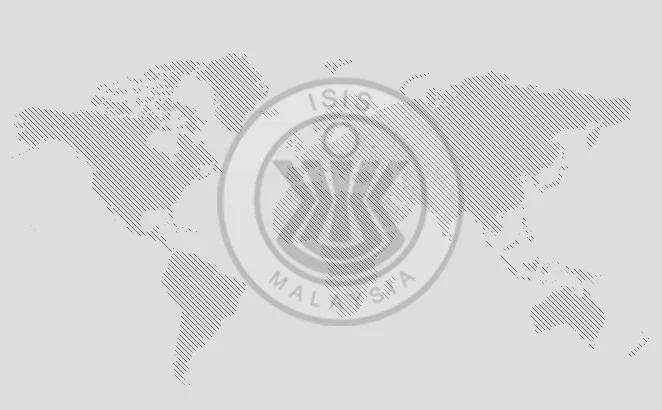Incorporating security elements in the fight against COVID-19 is essential, but Malaysia’s national response should not be constricted to that paradigm alone. While its grand strategy should still be driven chiefly by healthcare considerations, there are some internal and external impediments – borne out of a security mindset – that could complicate achieving this ideal.
Responses towards the COVID- 19 outbreak has been telling of the way healthcare crises can pose a threat to national security. It has given the world an unfortunate peek into how borderless threats like diseases can indiscriminately affect societies, political systems and economies around the world.
Despite health becoming a growing priority in international institutions and foreign policy engagements, it tends to fly under the radar as it does not usually interact with domestic political interests. Yet when it does, achieving a holistic healthcare solution is often sidelined in favour of the political imperatives of the day.
So how should a country protect itself against such a threat?
It is important to recognise the underlying difficulties in reconciling the traditional priorities of national security with emerging non-traditional threats. While not all diseases pose the same severe effects, the response should only be warranted when its existence can pose a potential or additional threat to political, economic and social stability; political, civic and social participation; economic stability internationally and domestically; and exceeding unilateral control of a country.
Such a focus on a security perspective has supported assumptions that national security measures will involve military power or criminal investigations in attempts to protect their country. It is more evident in Southeast Asia as much of its security forces have predominantly focused on internal threats. Even Malaysia’s means to enforce the Movement Control Order (MCO) has involved the deployment of military and civilian security forces to have the numbers able to control the spread of COVID- 19.
Regardless of our limited experiences in dealing with such threats, let alone novel pandemics, areas of public policy – such as our economic, healthcare and social components – need to be included. It cannot be abandoned or forced into such a traditional security paradigm like a square peg into a round hole.
This also means that our responses should not be viewed in the same way we do with floods or other natural disasters we may have been accustomed to. It will require the involvement of specialised powers, investigations and responses.
“This means that health agencies are arguably those best positioned and equipped to lead and coordinate responses to the disease threat.”
However, in order to do so, there are key external and internal considerations that need to be taken into account to ensure our future preparedness and avoid knee-jerk reactions for unforeseen developments.
On the one hand, there needs to be internal considerations about the way federal leaders and institutions have reconceptualised the nature of public health emergencies. Labelling it as a national security event can alter how federal, state and local governments respond, ultimately shifting points of authority and accountability. It will pose new practical and legal implications, such as changes to increases of federal influences, resources and powers to coordinate responses and the legal parameters to operate on. Another area in domestic policymaking will be tackling issues related to transparency in times of crisis. Ideally, displays of transparency are reflective of the responsiveness and aptitude to communicate risks to the public and relevant institutions. Whether good or bad, the information is necessary in order to respond accordingly to the crisis, its effects and any emotional fallout impacting the country.
Nonetheless, it is easier said than done when security considerations do not include saving face from potentially unflattering information or ineptness. This presents the dilemma of managing inaccurate information and the public demand for a solution. This was evident in the United States and the United Kingdom’s mismanagement of the COVID- 19 crisis. It exposed clashing vested interests of various stakeholders and the lack of pandemic preparedness as well as an overall social support infrastructure that places their citizens at a greater risk.
On the other hand, the inherently borderless nature of risks, such as diseases, will raise questions. Where do national interests end and global interests begin? How can we determine that the actions being taken are done in the interest of the collective good?
It is undeniable that tensions between global institutions and national interests exist, especially when sensitive issues concerning sovereignty interfere with cooperation on global issues like diseases. Using health interventions by state or non- state actors to achieve further foreign policy objectives is controversial, but an inescapable component, in health diplomacy.
From within the region and beyond, there should be greater resource sharing on multilateral and bilateral engagements. While there have not been much formalised exchanges, aside from existing standards by the International Health Regulations (IHR), such linkages and communications need to be fostered.
Whether we like it or not, it is a collective action problem, one that needs a solution in the interest of safety for all without limiting itself to securing “national interests”. This will mean ending territoriality between government institutions and working towards adopting uniform decisions.
There are pressures and temptations to produce quick and cost-effective results that should not be done at the expense of comprehensive, long-term goals. While much of these suggestions are not necessarily reinventing the wheel in terms of crisis management, sometimes seeking cooperative and preventive measures are better than a superficial cure.
This article first appeared in New Straits Times on 5 March 2020.





